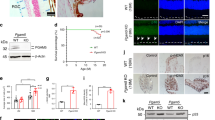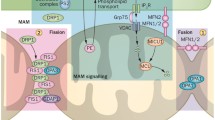Abstract
Mitochondria mediate energy metabolism, apoptosis, and aging, while mitochondrial disruption leads to age-related diseases that include age-related macular degeneration. Descriptions of mitochondrial morphology have been non-systematic and qualitative, due to lack of knowledge on the molecular mechanism of mitochondrial dynamics. The current study analyzed mitochondrial size, shape, and position quantitatively in retinal pigment epithelial cells (RPE) using a systematic computational model to suggest mitochondrial trafficking under oxidative environment. Our previous proteomic study suggested that prohibitin is a mitochondrial decay biomarker in the RPE. The current study examined the prohibitin interactome map using immunoprecipitation data to determine the indirect signaling on cytoskeletal changes and transcriptional regulation by prohibitin. Immunocytochemistry and immunoprecipitation demonstrated that there is a positive correlation between mitochondrial changes and altered filaments as well as prohibitin interactions with kinesin and unknown proteins in the RPE. Specific cytoskeletal and nuclear protein-binding mechanisms may exist to regulate prohibitin-mediated reactions as key elements, including vimentin and p53, to control apoptosis in mitochondria and the nucleus. Prohibitin may regulate mitochondrial trafficking through unknown proteins that include 110 kDa protein with myosin head domain and 88 kDa protein with cadherin repeat domain. Altered cytoskeleton may represent a mitochondrial decay signature in the RPE. The current study suggests that mitochondrial dynamics and cytoskeletal changes are critical for controlling mitochondrial distribution and function. Further, imbalance of retrograde versus anterograde mitochondrial trafficking may initiate the pathogenic reaction in adult-onset neurodegenerative diseases.











Similar content being viewed by others
Abbreviations
- AMD:
-
Age-related macular degeneration
- DAPI:
-
4′,6-Diamidino-2-phenylindole
- DIGE:
-
Differential gel electrophoresis
- DMEM:
-
Dulbecco’s modified eagle medium
- IP:
-
Immunoprecipitation
- PP2A:
-
Protein phosphatase 2A
- ROS:
-
Reactive oxygen species
- RPE:
-
Retinal pigment epithelium
- SDS-PAGE:
-
Sodium dodecyl sulfate polyacrylamide gel electrophoresis
- siRNA:
-
Small interfering RNA
References
Chung H, Lee H, Lamoke F, Hrushesky WJM, Wood PA, Jahng WJ (2009) Neuroprotective role of erythropoietin by antiapoptosis in the retina. J Neurosci Res 87:2365–2374
Arnouk H, Lee H, Zhang R, Chung H, Hunt RC, Jahng WJ (2011) Early biosignature of oxidative stress in the retinal pigment epithelium. J Proteom 74:254–261
Zhang R, Hrushesky WJM, Wood PA, Lee SH, Hunt RC, Jahng WJ (2010) Melatonin reprogrammes proteomic profile in light-exposed retina in vivo. Int J Biol Macromol 47:255–260
Sripathi SR, He W, Atkinson CL, Smith JJ, Liu Z, Elledge BM, Jahng WJ (2011) Mitochondrial-nuclear communication by prohibitin shuttling under oxidative stress. Biochemistry 50:8342–8351
Lee H, Chung H, Lee SH, Jahng WJ (2011) Light-induced phosphorylation of crystallins in the retinal pigment epithelium. Int J Biol Macromol 48:194–201
Sripathi SR, He W, Um JY, Moser T, Dehnbostel S, Kindt K, Goldman J, Frost MC, Jahng WJ (2012) Nitric oxide leads to cytoskeletal reorganization in the retinal pigment epithelium under oxidative stress. Adv Biosci Biotechnol 03:1167–1178
Sripathi SR, Sylvester O, He W, Moser T, Um J-Y, Lamoke F, Ramakrishna W, Bernstein PS, Bartoli M, Jahng WJ (2016) Prohibitin as the molecular binding switch in the retinal pigment epithelium. Protein J 35:1–16
Rafelski SM (2013) Mitochondrial network morphology: building an integrative, geometrical view. BMC Biol 11:71
Vidal M, Cusick ME, Barabási A-L (2011) Interactome networks and human disease. Cell 144:986–998
Cusick ME, Klitgord N, Vidal M, Hill DE (2005) Interactome: gateway into systems biology. Hum Mol Genet 14:R171–R181
Zhu B, Zhai J, Zhu H, Kyprianou N (2010) Prohibitin regulates TGF-beta induced apoptosis as a downstream effector of Smad-dependent and -independent signaling. Prostate 70:17–26
Dong P, Jiang L, Liu J, Wu Z, Guo S, Zhang Z, Zhou F, Liu Z (2013) Induction of paclitaxel resistance by ERα mediated prohibitin mitochondrial-nuclear shuttling. PLoS One 8:e83519
Sievers C, Billig G, Gottschalk K, Rudel T (2010) Prohibitins are required for cancer cell proliferation and adhesion. PLoS One 5:e12735
Zhu B, Fukada K, Zhu H, Kyprianou N (2006) Prohibitin and cofilin are intracellular effectors of transforming growth factor beta signaling in human prostate cancer cells. Cancer Res 66:8640–8647
Gamble SC, Odontiadis M, Waxman J, Westbrook JA, Dunn MJ, Wait R, Lam EW-F, Bevan CL (2004) Androgens target prohibitin to regulate proliferation of prostate cancer cells. Oncogene 23:2996–3004
Dart DA, Spencer-Dene B, Gamble SC, Waxman J, Bevan CL (2009) Manipulating prohibitin levels provides evidence for an in vivo role in androgen regulation of prostate tumours. Endocr Relat Cancer 16:1157–1169
Liu T, Tang H, Lang Y, Liu M, Li X (2009) MicroRNA-27a functions as an oncogene in gastric adenocarcinoma by targeting prohibitin. Cancer Lett 273:233–242
Vessal M, Mishra S, Moulik S, Murphy LJ (2006) Prohibitin attenuates insulin-stimulated glucose and fatty acid oxidation in adipose tissue by inhibition of pyruvate carboxylase. FEBS J 273:568–576
Vilalta PM, Zhang L, Hamm-Alvarez SF (1998) A novel taxol-induced vimentin phosphorylation and stabilization revealed by studies on stable microtubules and vimentin intermediate filaments. J Cell Sci 111(Pt 1):1841–1852
Whipple RA, Balzer EM, Cho EH, Matrone MA, Yoon JR, Martin SS (2008) Vimentin filaments support extension of tubulin-based microtentacles in detached breast tumor cells. Cancer Res 68:5678–5688
Lahat G, Zhu Q-S, Huang K-L, Wang S, Bolshakov S, Liu J, Torres K, Langley RR, Lazar AJ, Hung MC, Lev D (2010) Vimentin is a novel anti-cancer therapeutic target; insights from in vitro and in vivo mice xenograft studies. PLoS One 5:e10105
Minin AA, Moldaver MV (2008) Intermediate vimentin filaments and their role in intracellular organelle distribution. Biochemistry (Mosc) 73:1453–1466
Esue O, Carson AA, Tseng Y, Wirtz D (2006) A direct interaction between actin and vimentin filaments mediated by the tail domain of vimentin. J Biol Chem 281:30393–30399
Turowski P, Myles T, Hemmings BA, Fernandez A, Lamb NJ (1999) Vimentin dephosphorylation by protein phosphatase 2A is modulated by the targeting subunit B55. Mol Biol Cell 10:1997–2015
Hailey DW, Rambold AS, Satpute-Krishnan P, Mitra K, Sougrat R, Kim PK, Lippincott-Schwartz J (2010) Mitochondria supply membranes for autophagosome biogenesis during starvation. Cell 141:656–667
Malisan F, Testi R (2003) Mitochondrial lipids as apoptosis regulators. Curr Med Chem 10:1573–1580
Shigenaga MK, Hagen TM, Ames BN (1994) Review Oxidative damage and mitochondrial decay in aging. Proc Natl Acad Sci USA 91:10771–10778
Choi S-Y, Gonzalvez F, Jenkins GM, Slomianny C, Chretien D, Arnoult D, Petit PX, Frohman MA (2007) Cardiolipin deficiency releases cytochrome c from the inner mitochondrial membrane and accelerates stimuli-elicited apoptosis. Cell Death Differ 14:597–606
Mitchell TW, Buffenstein R, Hulbert AJ (2007) Membrane phospholipid composition may contribute to exceptional longevity of the naked mole-rat (Heterocephalus glaber): a comparative study using shotgun lipidomics. Exp Gerontol 42:1053–1062
Frederick RL, Shaw JM (2007) Moving mitochondria: establishing distribution of an essential organelle. Traffic 8:1668–1675
Sukhorukov VM, Meyer-Hermann M (2015) Structural heterogeneity of mitochondria induced by the microtubule cytoskeleton. Sci Rep 5:13924
Hollenbeck PJ, Saxton WM (2005) The axonal transport of mitochondria. J Cell Sci 118:5411–5419
Lee H, Arnouk H, Sripathi S, Chen P, Zhang R, Bartoli M, Hunt RC, Hrushesky WJM, Chung H, Lee SH, Jahng WJ (2010) Prohibitin as an oxidative stress biomarker in the eye. Int J Biol Macromol 47:685–690
Rintoul GL, Reynolds IJ (2010) Mitochondrial trafficking and morphology in neuronal injury. Biochim et Biophys Acta Mol Basis Dis 1802:143–150
Sheng Z-H (2014) Mitochondrial trafficking and anchoring in neurons: new insight and implications. J Cell Biol 204:1087–1098
Schwarz TL (2013) Mitochondrial trafficking in neurons. Cold Spring Harb Perspect Biol 5:a011304
Chang DTW, Honick AS, Reynolds IJ (2006) Mitochondrial trafficking to synapses in cultured primary cortical neurons. J Neurosci 26:7035–7045
Hopper RK, Carroll S, Aponte AM, Johnson DT, French S, Shen R-F, Witzmann FA, Harris RA, Balaban RS (2006) Mitochondrial matrix phosphoproteome: effect of extra mitochondrial calcium. Biochemistry 45:2524–2536
Schlager MA, Hoogenraad CC (2009) Basic mechanisms for recognition and transport of synaptic cargos. Mol Brain 2:25
Wang S, Fusaro G, Padmanabhan J, Chellappan SP (2002) Prohibitin co-localizes with Rb in the nucleus and recruits N-CoR and HDAC1 for transcriptional repression. Oncogene 21:8388–8396
Thuaud F, Ribeiro N, Nebigil CG, Désaubry L (2013) Prohibitin ligands in cell death and survival: mode of action and therapeutic potential. Chem Biol 20:316–331
Acknowledgments
We thank Dr. Harold J. Sheedlo (University of North Texas Health Science Center) for providing HRP cells. We thank Dr. Cameron Atkinson, Trevor Moser, Hyunju Lee, Dr. Hilal Arnouk, Dr. Ruonan Zhang, and Alex Keim for their excellent technical assistance. This study was supported by the Century II Equipment Fund, Research Excellence Fund from Michigan Technological University, Equipment Fund from NSF, Research and Teaching assistantship from American University of Nigeria. This work was supported in part by an unrestricted grant from Research to Prevent Blindness to the University of Utah Department of Ophthalmology and Visual Sciences. The authors thank Dr. Tristan Purvis for his critical reading and suggestions.
Author information
Authors and Affiliations
Corresponding author
Ethics declarations
Conflict of interest
None.
Electronic supplementary material
Below is the link to the electronic supplementary material.
Figure 1
Decreased mitochondria and prohibitin translocalization under oxygen imbalance conditions. Proteins in RPE cells treated by H2O2 (100 μM) were detected by immunocytochemistry. MitoTracker Orange, DAPI, prohibitin-specific primary antibody and Alexa488-conjugated secondary antibody showed mitochondria, the nucleus and prohibitin, respectively (PDF 704 kb)
Table 1
Immunoprecipitation experiments demonstrated that prohibitin binds to mitochondrial trafficking proteins, including kinesin, unknown protein at 110 kDa (myosin head motor domain, SH3 domain, ATP binding domain, GenBank: BAG 65583, Accession: AK 304840), unknown protein at 88 kDa (cadherin repeat, Ca2+ binding, GenBank: BAC 28880, Accession: AK 034910) (DOCX 15 kb)
Rights and permissions
About this article
Cite this article
Sripathi, S.R., He, W., Sylvester, O. et al. Altered Cytoskeleton as a Mitochondrial Decay Signature in the Retinal Pigment Epithelium. Protein J 35, 179–192 (2016). https://doi.org/10.1007/s10930-016-9659-9
Published:
Issue Date:
DOI: https://doi.org/10.1007/s10930-016-9659-9




